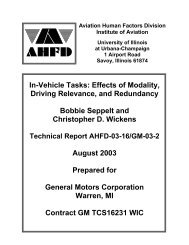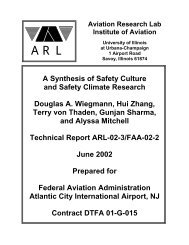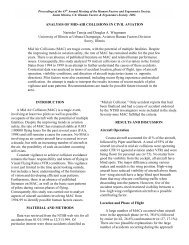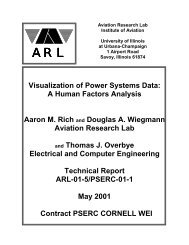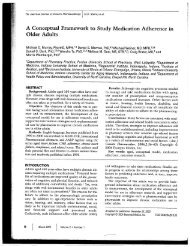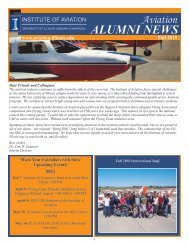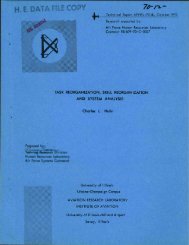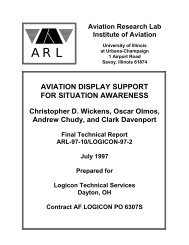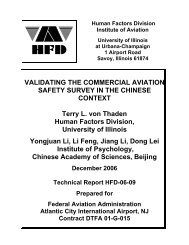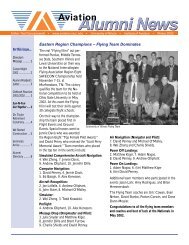Defining and Assessing Safety Culture in High Reliability Systems
Defining and Assessing Safety Culture in High Reliability Systems
Defining and Assessing Safety Culture in High Reliability Systems
You also want an ePaper? Increase the reach of your titles
YUMPU automatically turns print PDFs into web optimized ePapers that Google loves.
Deal, T. E., & Kennedy, A. A. (1983). <strong>Culture</strong>: A new look through old lenses. Journal of<br />
Applied Behavioral Science, 19(4), 498-505.<br />
This work discusses the revival of <strong>in</strong>terest <strong>in</strong> the role that cultural, rather than rational, factors<br />
play <strong>in</strong> how organizations function. It is argued that every organization has a dist<strong>in</strong>ctive culture<br />
that has evolved through trial <strong>and</strong> error <strong>and</strong> that <strong>in</strong>cludes shared values, heroes that embody these<br />
values, rituals <strong>and</strong> ceremonies, <strong>and</strong> cultural networks. In stronger, more cohesive cultures,<br />
members’ behaviors are constra<strong>in</strong>ed by mutual accord rather than comm<strong>and</strong>. By characteriz<strong>in</strong>g<br />
the bus<strong>in</strong>ess environment as hav<strong>in</strong>g two ma<strong>in</strong> dimensions, degree of risk <strong>and</strong> speed of feedback,<br />
four basic cultural types were identified <strong>in</strong> different contexts:<br />
(1) Tough-guy/Macho culture — high risk <strong>and</strong> quick feedback,<br />
(2) “Bet your company” culture — high risk <strong>and</strong> slow feedback,<br />
(3) “Work hard/Play hard” culture — low risk <strong>and</strong> quick feedback, <strong>and</strong><br />
(4) Process culture—low risk <strong>and</strong> slow feedback.<br />
The metaphor of organizational culture <strong>in</strong> behavioral science research helps us underst<strong>and</strong> what<br />
more rigorous concepts miss, but also leaves much uncovered <strong>and</strong> unexpla<strong>in</strong>ed. In the realm of<br />
basic science, the criteria to assess a concept are replicability, generalizability, <strong>and</strong> reliability; <strong>in</strong><br />
applied science, the criterion is usefulness. It is argued that organizational culture is a concept<br />
that is both powerful <strong>and</strong> useful.<br />
Eiff, G. (1999). Organizational safety culture. Paper presented at the Tenth International<br />
Symposium on Aviation Psychology. Columbus, OH.<br />
The necessary attributes of a safety culture, <strong>and</strong> what it must have as well as what it must<br />
become <strong>in</strong> order to be effective at foster<strong>in</strong>g safety at all levels, were reviewed. Accord<strong>in</strong>g to<br />
Reason, safety cultures must be “<strong>in</strong>formed cultures” characterized by be<strong>in</strong>g a good report<strong>in</strong>g<br />
culture, a committed learn<strong>in</strong>g culture, an organizationally flexible culture <strong>and</strong> a just adjudicative<br />
<strong>and</strong> discipl<strong>in</strong>ary culture. Management <strong>and</strong> the <strong>in</strong>dividual employee’s role of promot<strong>in</strong>g safety<br />
culture were discussed. This article also explored the difference between “corporate cultures”<br />
<strong>and</strong> “work cultures” <strong>and</strong> discussed how a correctly developed corporate culture provided the<br />
opportunity for a safety culture to develop but did not <strong>in</strong>sure its establishment. The paper related<br />
research f<strong>in</strong>d<strong>in</strong>gs, concern<strong>in</strong>g how charismatic workers <strong>and</strong> managers, who actually def<strong>in</strong>ed the<br />
cultural focus of the workplace, <strong>in</strong>fluenced local cultures’ def<strong>in</strong>itions of safety. The paper<br />
concluded by answer<strong>in</strong>g the nagg<strong>in</strong>g question of how safety culture might be successfully<br />
developed with<strong>in</strong> the context of the aviation ma<strong>in</strong>tenance work environment by discuss<strong>in</strong>g an<br />
experimental strategy currently be<strong>in</strong>g evaluated by Purdue researchers to <strong>in</strong>tegrate safety<br />
advocacy <strong>in</strong>to aviation ma<strong>in</strong>tenance environments. This strategy was called <strong>Safety</strong> Action Team,<br />
which utilized a peer monitor<strong>in</strong>g, mentor<strong>in</strong>g, <strong>and</strong> adjudication process coupled with a highly<br />
diversified communication strategy to <strong>in</strong>sure that problems are reviewed <strong>and</strong> addressed by<br />
representatives from all career field.<br />
10




